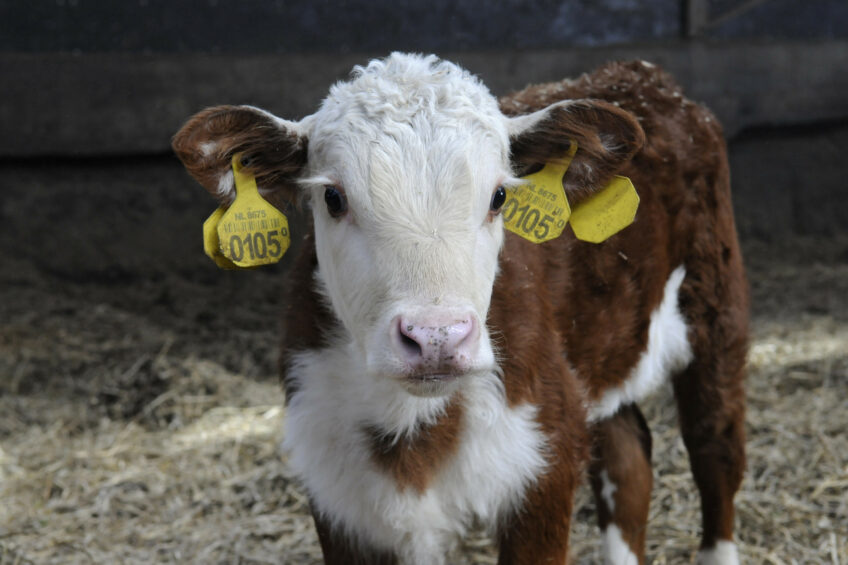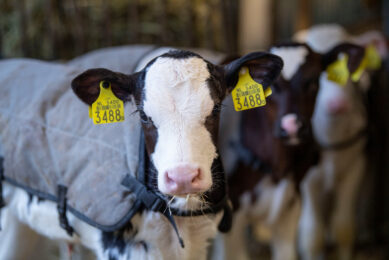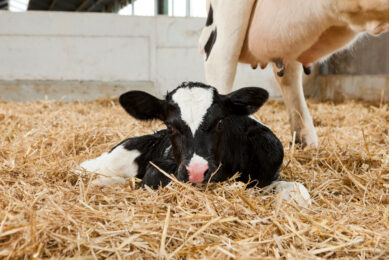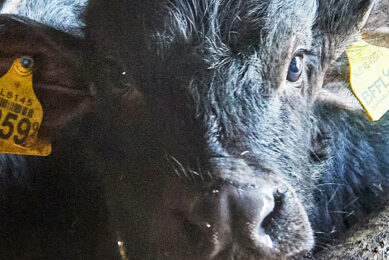Calf personality: The effects on performance

Yes, calves have their own personality and this can effect feeding behaviour and performance. The so-called ‘exploratory calves’ tend to consume feed at an earlier age, new data from Canadian research showed.
Cattle are known to differ in their individual responses to stressful events. This individual variation may have important consequences for production. Animals that are generally calmer or less reactive have improved growth rates, meat quality, and milk production, improved immune function, and decreased physiological responses to stressful events compared with excitable or more reactive animals.
Identifying calf personality traits
Only a few studies have focused on personality traits of young cattle and how these relate to performance despite the growing evidence that early-life growth and nutrition are predictive of long-term productivity, such as first-lactation milk yield, feed intake, efficiency, and body and carcass composition at slaughter. This is why, in a new study, published in the Journal of Dairy Science (in press), researchers tried to identify calf personality traits using standardised tests and determine whether these were associated with measures of feeding behaviour and performance.

Reaction to environment, human and bucket
In the trial, 56 dairy calves were housed in 7 groups of 8 calves each with access to an automated milk feeder and ad libitum access to water, starter, and hay. Starter DMI and the number of unrewarded visits to the automated milk feeder during each of 4 periods were measured:
- pre-step (full milk allowance; 7–41 d of age),
- step (milk allowance reduced to 50%; 42–50 d of age),
- weaning (51–54 d of age), and
- post-weaning (55–68 d of age).
At 27 and 76 d of age, each calf was subjected to 3 novelty tests:
- novel environment (30 min),
- human approach (10 min with an unknown stationary human), and
- novel object (15 min with a black 140L bucket).
During each of the tests, 7 behaviours were scored:
- latency to touch and duration of touching the human or object,
- duration of attentive behaviour toward the human or object,
- number of vocalisations,
- number of quadrants crossed as a measure of activity,
- duration of inactivity,
- duration of exploration, and
- duration of playing.
Data were averaged across ages and then across tests. Principal component analysis revealed 3 factors (interactive, exploratory–active, and vocal–inactive) that together explained 73% of the variance.
Large variation among calves
It was shown that there was substantial individual variation among calves for weight gains and starter DMI over the experimental period, ranging from 0.5 to 1.2 kg/d of ADG and from 0.25 to 1.25 kg/d of starter DMI. Individual calves also differed in the age they first found and began to consume starter (at least 40 g of grain), ranging from 4 to 41 d of age. Calves that were more exploratory–active began to consume starter at an earlier age and showed greater starter dry matter intake during all experimental periods and greater overall average daily gain. Calves that were more interactive and vocal–inactive had more unrewarded visits to the milk feeder during initial milk reduction.
Personality traits explained
This study was the first to investigate personality traits of dairy calves using responses to novelty and the relationship with performance, feed intake, and development of solid feeding behaviour around weaning. The researchers conclude that personality traits explain individual variability in the development of feeding behaviour, solid feed intake and weight gains, and behavioural responses around weaning. Further understanding of the mechanisms behind these associations is warranted, including how food neophobia, sociability, and learning processes relate to personality traits relevant in the development of feeding behaviour.
[Source: Journal of Dairy Science]
The Dairy Global Newsletter
Sign up for our newsletter and receive all our need-to-know content three times a week.
Join 13,000+ subscribers
Subscribe to our newsletter to stay updated about all the need-to-know content in the dairy sector, two times a week.










